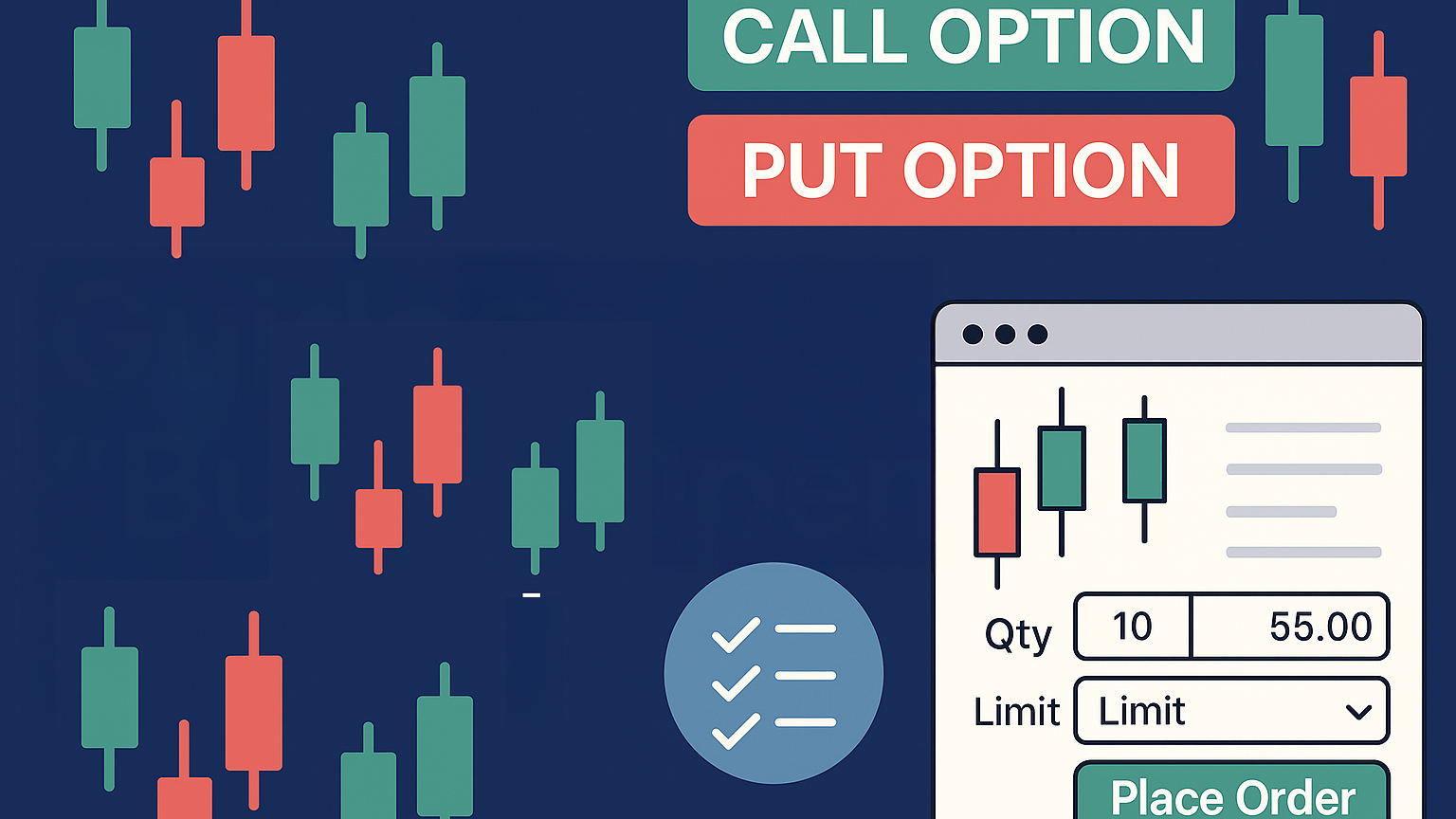Learn how dollar-cost averaging can help you invest consistently, manage risk, and make informed decisions in fluctuating markets.
Dollar-cost averaging (DCA) is an easy way to invest without worrying about timing the market. You invest a fixed amount regularly, buying more shares when prices are low and fewer when prices are high. This not only balances your average purchase price but also reduces emotional decision-making.
Key Points:
- What is DCA? Regularly invest a fixed amount to smooth out market fluctuations.
- Benefits: Lowers risk, avoids market timing, and builds discipline.
- Averaging Up: Invest more in strong-performing stocks based on research.
- Averaging Down: Buy more shares during price dips to lower your cost basis.
- Risk Management: Use stop-loss orders, diversify, and track portfolio balance.
DCA is ideal for steady income earners or those who want a hands-off, consistent approach to investing. While lump-sum investing may outperform DCA long-term, DCA offers better psychological and risk control for many investors.
Dollar Cost Averaging for Beginners
How to Average Up
Averaging up builds on the disciplined approach of dollar-cost averaging (DCA) by increasing your investment in a stock that's performing well. To make this strategy effective, base your decisions on solid research and clear market signals.
Best Times to Average Up
Focus on stocks showing consistent strength, not just temporary price jumps. Here’s what to look for:
| Signal Type | Key Indicators |
|---|---|
| Fundamental Growth | Revenue growth, earnings exceeding expectations, and increasing market share |
| Technical Strength | Trading above major moving averages and forming higher lows |
| Market Position | Leading within the industry and building competitive advantages |
Once these factors are confirmed, use a systematic approach to increase your position gradually.
Averaging Up Methods
-
Set Clear Entry Points
Identify specific price levels or technical triggers in advance to avoid emotional decisions. -
Size Positions Appropriately
Keep your portfolio balanced by ensuring no single stock exceeds your target allocation (e.g., 5% per stock). -
Document Your Thesis
Write down your reasons for investing, including key growth metrics, competitive strengths, and market opportunities.
Averaging Up Risks
While this strategy can boost gains, it comes with risks that need careful management:
| Risk Factor | How to Manage It |
|---|---|
| Position Overweight | Secure profits by selling portions of your position |
| Higher Cost Basis | Use stop-loss orders below key support levels to limit potential losses |
| Missing Peak Returns | Take partial profits during strong upward price movements |
| Transaction Costs | Make fewer, larger purchases to minimize fees |
To manage these risks effectively:
- Limit position sizes to a specific percentage of your portfolio.
- Regularly review your holdings to ensure they still align with your investment thesis.
- Maintain cash reserves for new opportunities.
How to Average Down
Averaging down is a way to lower your investment's cost basis during market dips, complementing a disciplined dollar-cost averaging (DCA) strategy. This approach involves buying more shares when prices fall, but it’s crucial to evaluate market conditions and company fundamentals to ensure the decline is temporary.
Best Times to Average Down
Timing is everything when it comes to averaging down. Here are some key indicators to help you decide:
| Market Condition | What to Look For | When to Act |
|---|---|---|
| Fundamental Strength | Strong cash flows, low debt, stable earnings | Price drop unrelated to core business performance |
| Market Context | Sector trends and overall macroeconomic factors | Temporary weakness compared to industry peers |
| Price Movement | Support levels and trading volume | Price hits major support with higher trading volume |
This strategy works best with blue‑chip stocks that have solid underlying fundamentals. A temporary price dip in such stocks can often signal a buying opportunity.
How to Average Down
To average down, divide your total investment into smaller portions. Make additional purchases when the stock price drops to predetermined levels. After each purchase, adjust your breakeven price using this formula:
(initial cost + additional cost) ÷ total shares.
Having a clear plan ensures you stay disciplined and avoid overexposure.
Managing Risk When Averaging Down
This strategy can increase your exposure to losses if the stock continues to fall, so risk management is crucial. Here are some ways to limit potential downsides:
- Diversify: Avoid putting too much capital into a single position.
- Set Stop-Loss Orders: Place these below key support levels to limit losses.
- Protect Capital: If the stock declines by more than 25%, consider halting additional purchases and avoid using leverage.
DCA Strategy Setup
Set up your DCA strategy by committing to a consistent investment amount that fits your budget. This steady approach supports the disciplined methods we've touched on earlier.
Creating Your DCA Plan
Start by deciding how much you can invest on a regular basis. Here's a quick guide to help you structure your plan:
| Investment Frequency | Benefits | Best For |
|---|---|---|
| Weekly | More frequent entries for smoother cost averaging | Those with weekly income |
| Bi‑weekly | Matches typical pay schedules | Salaried employees paid every two weeks |
| Monthly | Fewer transactions and easier tracking | Individuals with monthly income |
To determine each investment, simply divide your monthly budget by your chosen frequency.
Once that's set, consider using tools to automate and fine‑tune your plan.
DCA Tools and Software
Automation can make sticking to your DCA strategy much easier. Platforms like LuxAlgo and 3Commas offer features to streamline the process:
- LuxAlgo: For $59.99/month, the Ultimate plan provides access to LuxAlgo’s AI Backtesting Assistant—helping create trading strategies automatically—as well as exclusive technical analysis tools to identify ideal entry points.
-
3Commas: With over 15 million DCA bots created, users have reported annual returns of 15–30% using automated strategies. Key features include:
- Multi‑pair trading
- Custom signal integration
- Risk management tools
- Strategy backtesting
These platforms can save time and help you maintain a consistent, disciplined approach to investing.
Updating Your DCA Plan
Markets change, and your DCA plan should evolve too. Regular updates can help you stay on track:
- Monthly: Check your average cost and portfolio diversification.
- Quarterly: Reassess your investment frequency and amounts.
- Annually: Adjust based on market trends and your financial goals.
Common DCA Mistakes
Even well‑planned DCA (Dollar‑Cost Averaging) strategies can run into issues. Spotting and addressing these challenges is key to maintaining steady investment progress.
Emotion‑Based Decisions
Market swings often lead to emotional reactions, which can derail your DCA approach. Here's how to stay on track:
| Emotional Trigger | How to Avoid It | What to Do |
|---|---|---|
| Market Dips | Automate Investments | Schedule recurring transfers with your broker |
| FOMO During Rallies | Set Limits | Cap your investment amount for each period |
| Panic Selling | Stick to a Review Schedule | Check performance at set intervals, not daily |
Unbalanced Portfolios
An unbalanced portfolio—caused by overinvesting in a single asset—can weaken your overall strategy. To avoid this, set clear allocation limits and spread your investments across various assets. Diversification keeps your portfolio in check and reduces risk.
Neglecting Strategy Reviews
Skipping regular reviews can cause your DCA plan to fall out of sync with your goals or market conditions. Sabrina LaFleur, Lead Planner and CFP® at LearnLux, highlights the importance of staying consistent:
"This strategy ensures you're still participating in long‑term market growth by investing what you can regardless of market conditions instead of allowing emotion to drive your investment decisions."
To keep your plan on track, schedule periodic reviews:
| Review Period | Key Focus | Action Steps |
|---|---|---|
| Monthly | Asset Allocation | Rebalance if any holding exceeds your set limits |
| Quarterly | Performance Check | Compare results to your benchmarks |
| Annually | Goal Alignment | Adjust contributions and frequency as needed |
Conclusion
Dollar-cost averaging (DCA) helps manage risk and keeps emotions in check by committing a fixed amount of money to investments at regular intervals.
Here’s a quick breakdown of the key elements for using DCA effectively:
| DCA Component | How to Apply | Why It Helps |
|---|---|---|
| Investment Frequency | Stick to a set schedule (weekly or monthly) | Minimizes the risk of bad timing |
| Position Sizing | Invest the same amount each time | Avoids emotional, impulsive decisions |
| Market Conditions | Invest no matter the price | Takes advantage of market fluctuations |
| Portfolio Balance | Rebalance regularly | Keeps your risk level in check |
While a Northwestern Mutual study showed that lump‑sum investing outperformed DCA about 75% of the time over a 10‑year period, DCA remains a solid choice for those prioritizing steady, risk‑conscious investing.







